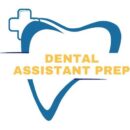Are you navigating the complexities of DANB CDA CE requirements for your dental assistant certification? Knowing what’s required to maintain your credentials is crucial.
Our article demystifies the CE mandates, guiding you through the necessary update on radiography, infection control, and CPR protocols—all tailored to keep your skills sharp and your qualification valid, ensuring you excel in your dental career.
1. Understanding the DANB CDA Certification
If you’re a dental assistant looking to elevate your professional credentials, obtaining a Certified Dental Assistant (CDA) certification through the Dental Assisting National Board is a stellar move. This nationally recognized certification can not only enhance your career prospects but also assure patients and employers of your commitment to high-quality dental care.
Earning a DANB CDA certification signifies that you have met specific standards in dental assisting proficiency, including a comprehensive understanding of chairside assisting, infection control, and radiology. To achieve this recognized standard, candidates must successfully navigate a rigorous examination process—a testament to the expertise and dedication required in the field.
Keeping your certification current entails meeting DANB CDA CE requirements regularly. This commitment to continuing education is pivotal in staying abreast with the rapid advancements in the dental industry. As a certified professional, your pursuit of education is a promise to provide the best care possible, ensuring you are well-equipped to adapt to evolving practices and technologies.
2. Number of CDE Credits Required
Remember, as DANB CDA certification is a mark of excellence, maintaining it requires diligence and a proactive approach to learning. The DANB stipulates that you must complete a total of 30 continuing dental education (CDE) credits every year to keep your certification active.
Your continuing education journey should include:
- Core Courses: Pertinent topics that reinforce your foundational knowledge and practical skills.
- Elective Courses: Subjects allowing you to explore new procedures, technologies, and methodologies in the dental field.
- CPR Certification: A hands-on CPR course from a DANB-accepted provider, ensuring you’re prepared to handle emergencies.
This continuous investment in professional development pays dividends, as it not only keeps you compliant with certification standards but significantly enriches your career longevity and growth prospects.
3. Mandatory CDE Categories
As you map out your continuing education path, it’s crucial to align your course selections with the mandatory categories defined by the DANB. These categories are carefully crafted to ensure that certified dental assistants continue to hone their clinical skills while also enhancing their knowledge in vital areas such as dental office management.
Here’s a snapshot of the mandatory categories:
- Clinical Practice: Courses that cover cutting-edge clinical practices, innovative patient care techniques, and advanced chairside assistance methods.
- Dental Office Management: Education that sharpens your administrative acumen, addressing topics like ethics, patient relations, and team collaboration.
- Additional DANB-Recognized Courses: CDE credits that fulfill specific state regulatory requirements or voluntary certifications you may have.
Balancing these categories elevates your versatility within the dental office, making you an indispensable part of the team while grounding you in the principles of exceptional dental care.
4. Radiography Requirements
Radiographic imaging is a cornerstone of modern dental diagnostics. Therefore, staying proficient through continuing education in this field is non-negotiable for any serious dental assistant. The DANB CDA CE requirements maintain precise conditions for radiography training, ensuring that you can safely and effectively operate dental X-ray equipment and interpret the results.
You should focus on understanding the latest safety protocols, advancements in digital radiography, and techniques for minimizing patient exposure to radiation. Having a strong grasp of these concepts not only boosts your competence but also engenders trust among the dental team and patients alike.
5. Infection Control Protocols
In the era of heightened awareness around transmissible diseases, rigorous infection control in the dental office is more crucial than ever. Your journey in continuous education must repeatedly cast a spotlight on the ever-evolving strategies and protocols for minimizing infection risks.
The DANB CDA CE requirements emphasize infection control as a principal category for CDE credits due to its profound impact on patient and staff safety. The courses you select should provide extensive knowledge on standards set by agencies such as the CDC and OSHA. The goal is to ensure a sterile environment that protects against cross-contamination, enabling you to be a proactive guardian of public health within your practice.
6. Hands-On CPR Certification
One of the non-negotiable DANB CDA CE requirements is acquiring hands-on CPR certification. Holding this certification is not just about ticking a box; it equips you to respond effectively during any cardiac emergencies that may occur within the dental office. The human element of providing immediate aid makes this a vital skill.
The DANB CDA CE specifics are strict about what constitutes proper CPR certification. Your training must include:
- Live Demonstrations: An in-person aspect where techniques are practically shown.
- Skill Evaluation: A segment of the course where your ability to perform CPR is assessed.
- Certification from a Recognized Body: The course provider should be one accepted by the DANB, such as the American Red Cross or the American Heart Association.
Given that dental assistants play a pivotal role in patient care, being proficient in CPR is a cornerstone of your professional preparedness and patient safety. Make sure to check the DANB’s list of accepted providers to ensure your certification meets their high standards.
7. Renewal Time Frames and Deadlines
Staying aware of key deadlines is essential to ensure uninterrupted certification. Time management, in this regard, is not just about fitting your continuing education into a busy schedule, but also about aligning your efforts with the calendar set by the DANB.
Keeping track of your certification status involves:
- Annual Renewal: Your DANB CDA certification requires renewal every year, without exception.
- Submission Window: Prepare and submit your renewal application well before the expiration date of your certification.
- CE Credits and CPR Certification: These must be up-to-date when you renew, so plan your courses accordingly.
Mark your calendar, set alerts, and perhaps keep a CE journal. Whatever your method, ensure that you’re ahead of the curve and never caught in a last-minute scramble to meet the DANB CDA CE deadline.
Certification Renewal Process
The path to renewing your DANB CDA certification can be straightforward if you are well-versed with the steps. It involves:
- CE Credits: Verification that you’ve completed the obligatory number of CDE credits.
- CPR Validation: Proof of current hands-on CPR certification from an approved provider.
- Renewal Fee: Payment of the set renewal fee to maintain your certification.
This process is more than an administrative task; it’s an affirmation of your commitment to excellence in dental assisting. By successfully renewing your certification, you illustrate your dedication to professional growth and patient care.
Expanded Function Dental Auxiliary Considerations
For those who have gone the extra mile to qualify as an Expanded Function Dental Auxiliary (EFDA), staying current with DANB CDA CE requirements is equally vital. The expectation for ongoing education in this role is heightened due to the advanced responsibilities carried out.
An EFDA must be particularly conversant with courses that cover:
- Restorative Functions: Techniques that reinforce your capabilities in placing, carving, and finishing dental restoratives.
- Biocompatible Materials: Updates on new or improved material that ensure patient safety and comfort.
- State Regulations: Keeping abreast with local laws that govern the scope of dental practice.
A commitment to continuous education ensures that your additional qualifications lead to superior patient care and reflects the zenith of professionalism.
Conclusion
Achieving and maintaining your DANB CDA certification is a testament to your dedication to your profession. With a clear understanding of the DANB CDA CE requirements, you’re not just meeting a mandate; you’re elevating your practice, enhancing patient care, and enriching your career. Embrace the journey of lifelong learning with all its avenues, knowing that each step is a building block to becoming the best dental assistant you can be.

